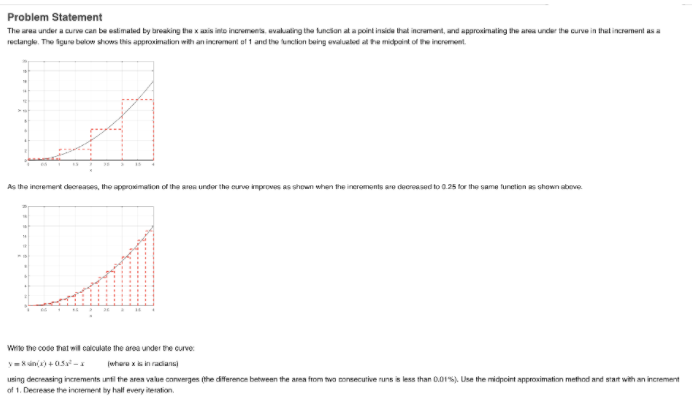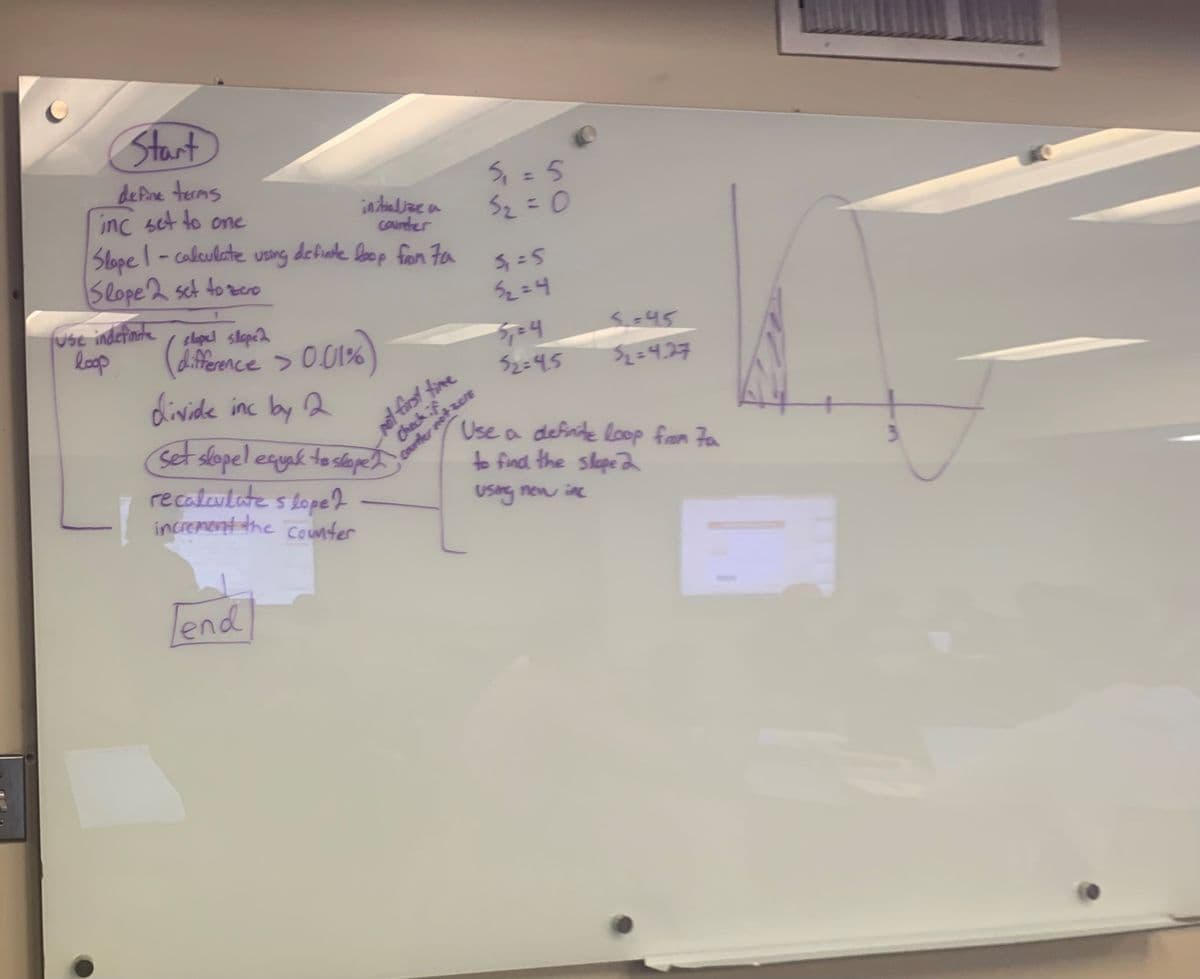Matlab Code % Problem Statement - The area under a curve can be estimated by breaking % the x-axis into increments, evaluating the function at a point inside % that increment, and approximating the area under the curve in that % increment as a rectangle. %% Housekeeping Commands clc
Matlab Code
% Problem Statement - The area under a curve can be estimated by breaking
% the x-axis into increments, evaluating the function at a point inside
% that increment, and approximating the area under the curve in that
% increment as a rectangle.
%% Housekeeping Commands
clc
clear
%% Variables to be used
% Inputs
% Xmin - the minimum limit of the range
% Xmax - the maximum limit of the range
% Outputs
% area - the final approximation of the area under the curve for the given range
%% Inputs
% This generates the scalars, Xmin and Xmax, with random values which will be used to evaluate your code
% Xmin=randi(5)
% Xmax=Xmin+randi([5 10])
% Test Case 1
Xmin = 0;
Xmax = 10;
% Test case output:
% area = 131.3823
%% Start


Trending now
This is a popular solution!
Step by step
Solved in 3 steps with 2 images









